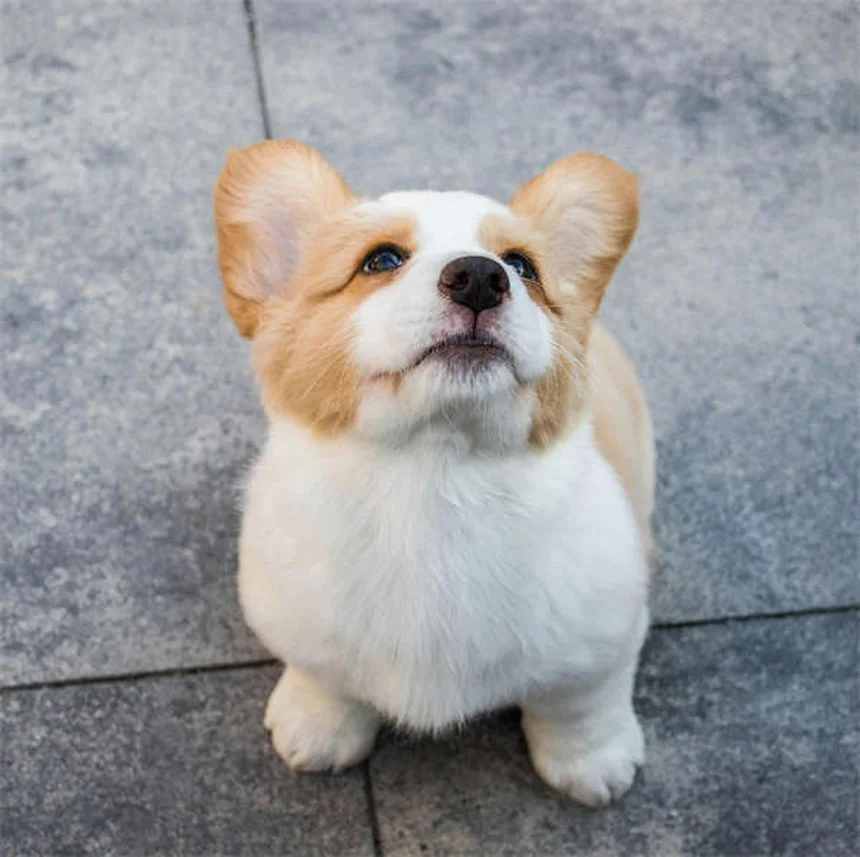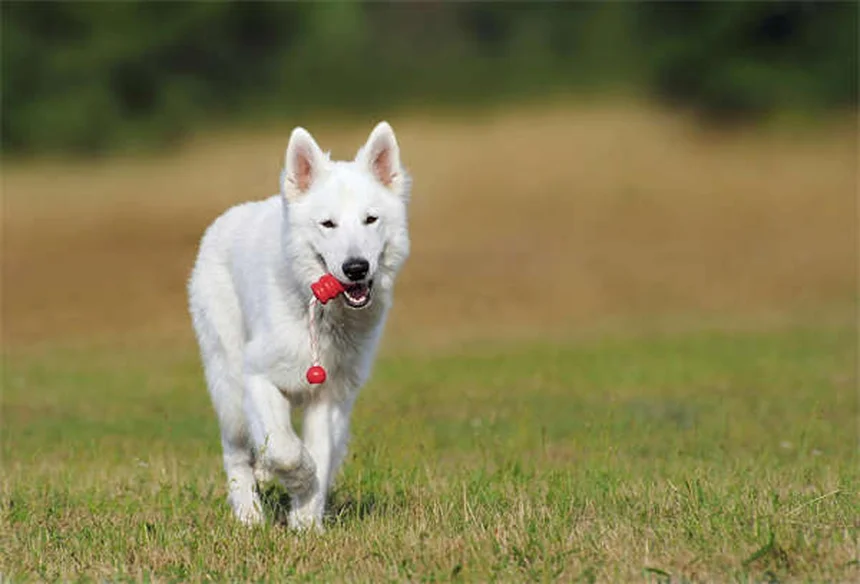Is your cat acting weird? The answer is: Yes, your cat might be sick if they're showing sudden changes in behavior or appearance. As a cat owner myself, I know how tricky it can be to spot the subtle signs of illness in our feline friends. Cats are masters at hiding discomfort - it's a survival instinct from their wild ancestors. But if you know what to look for, you can catch health issues early when they're most treatable. In this guide, I'll walk you through the most common symptoms of a sick cat that I've learned from years of experience and countless vet visits with my own fur babies. From changes in appetite to weird litter box habits, we'll cover everything you need to know to keep your kitty healthy and happy.
E.g. :Ferret Emergency Signs: 7 Critical Symptoms You Can't Ignore
- 1、Is Your Cat Acting Weird? Here's How to Tell If They're Sick
- 2、Behavior Changes That Scream "Take Me to the Vet!"
- 3、Physical Signs You Can't Ignore
- 4、Emergency Situations: When to Panic
- 5、Your Cat's Mood: The Emotional Barometer
- 6、Weight Fluctuations: The Scale Doesn't Lie
- 7、When in Doubt, Check It Out!
- 8、The Hidden Language of Cat Postures
- 9、The Secret Life of Cat Sleeping Patterns
- 10、The Mysterious World of Cat Play Behavior
- 11、The Scoop on Poop: What Your Cat's Litter Box Reveals
- 12、The Eyes Have It: Windows to Feline Health
- 13、The Nose Knows: Sniffing Out Health Issues
- 14、FAQs
Is Your Cat Acting Weird? Here's How to Tell If They're Sick
Hey there fellow cat lovers! I know how stressful it can be when your furry friend isn't acting like themselves. As an experienced cat owner myself, I've learned that paying attention to small changes can make all the difference in catching health issues early.
Appetite Changes: The First Red Flag
Let's talk about food - because when a cat stops being interested in their favorite treats, something's definitely up.
Increased hunger might seem cute at first ("Look how much my kitty loves food!"), but it could signal serious conditions like diabetes or hyperthyroidism. I remember when my neighbor's cat suddenly started eating twice as much - turns out he had intestinal parasites!
On the flip side, decreased appetite is even more concerning. Your cat might be dealing with:
- Nausea (who wants to eat when they feel sick?)
- Dental pain (imagine trying to eat with a toothache)
- Gastrointestinal issues
Water Consumption: The Silent Clue
Here's something most people don't think about - how much water your cat drinks. Did you know a healthy cat typically drinks about 1 ounce of water per pound of body weight daily?
If you're constantly refilling the water bowl, your cat might be showing early signs of:
| Condition | Other Symptoms |
|---|---|
| Kidney disease | Weight loss, bad breath |
| Diabetes | Increased appetite, weight loss |
| Hyperthyroidism | Hyperactivity, weight loss |
Behavior Changes That Scream "Take Me to the Vet!"
 Photos provided by pixabay
Photos provided by pixabay
Litter Box Drama: More Than Just a Mess
Okay, let's be real - when your cat stops using the litter box, it's not just annoying, it's a major warning sign. Male cats especially need immediate vet care if they can't urinate - this could be a life-threatening blockage!
But why would a perfectly litter-trained cat suddenly start going elsewhere? Here's what I've learned:
- They might associate the box with pain (from urinary infections or arthritis)
- In multi-cat homes, another cat might be guarding the box
- Gastrointestinal issues can make them desperate to go anywhere
Vocalization: Your Cat's Way of Saying "Help!"
Some cats are naturally chatty (looking at you, Siamese!), but sudden changes in meowing patterns deserve attention. Increased vocalization could mean:
Is your normally quiet cat suddenly yowling at night? This could be cognitive dysfunction in older cats or pain from conditions like hyperthyroidism. My 15-year-old tabby started doing this, and it turned out she had developed arthritis.
Physical Signs You Can't Ignore
Grooming Habits: Too Much or Too Little?
Here's a weird one - grooming changes can go both ways. Some cats overgroom when stressed or in pain (I've seen cats lick themselves bald!), while others stop grooming completely.
What's normal? A healthy cat spends 30-50% of their awake time grooming. If you notice:
- Matted fur (especially in hard-to-reach spots)
- Bald patches
- Red, irritated skin
It's time for a vet visit. Overweight cats often struggle to groom their hindquarters properly - another reason to keep your kitty at a healthy weight!
 Photos provided by pixabay
Photos provided by pixabay
Litter Box Drama: More Than Just a Mess
We've all smelled that lovely "morning breath" when our cats yawn in our faces, but truly foul odor is different. Did you know bad breath can indicate kidney disease or diabetes, not just dental issues?
Here's my personal dental care routine for my cats:
- Use pet-safe toothpaste (poultry flavor works best!)
- Brush gently with a soft toothbrush
- Start slow - even 10 seconds is better than nothing
Emergency Situations: When to Panic
Breathing Trouble: Don't Wait!
Here's something that might surprise you - cats shouldn't pant like dogs do. Panting in cats is almost always a sign of distress, whether from:
- Asthma (common in indoor cats)
- Heart disease
- Heat stroke
I'll never forget when my cat started wheezing after playing - turns out he had feline asthma and needed an inhaler!
Seizures: The Scariest Symptom
Nothing prepares you for seeing your cat have a seizure. What causes them? Could be epilepsy, toxins, or brain tumors. The important thing is to:
- Keep your cat safe from falling
- Time the seizure (most last less than 2 minutes)
- Call your vet immediately
Your Cat's Mood: The Emotional Barometer
 Photos provided by pixabay
Photos provided by pixabay
Litter Box Drama: More Than Just a Mess
Have you noticed your friendly cat suddenly hissing or hiding? This isn't just moodiness - it could indicate:
Why would a cat's personality change? Pain is the most common culprit. Imagine if you had a constant headache and people kept trying to pet you - you'd be cranky too!
Pupil Problems: The Window to Their Health
Here's a cool fact - cat pupils should be equal in size and respond to light. Uneven pupils (anisocoria) can signal:
- Eye injuries
- Neurological issues
- High blood pressure
Weight Fluctuations: The Scale Doesn't Lie
Unexplained Weight Loss: Silent but Deadly
Did you know cats can lose weight without you noticing? Gradual weight loss is especially dangerous because we see our cats every day and might miss small changes.
Common causes include:
- Hyperthyroidism (common in older cats)
- Kidney disease
- Diabetes
- Cancer
Weight Gain: More Than Just Overeating
While most weight gain comes from too many treats (guilty as charged!), sometimes it's medical. Did you know fluid retention from conditions like FIP can make a cat look overweight?
When in Doubt, Check It Out!
At the end of the day, you know your cat best. If something feels off, trust your gut. As my vet always says: "It's better to come in for nothing than wait until it's too late."
Here's a quick checklist of emergency signs:
- Straining to urinate (especially male cats)
- Repeated vomiting
- Difficulty breathing
- Seizures
- Sudden collapse
Remember, cats are masters at hiding illness - by the time they show obvious symptoms, they're often very sick. Regular vet checkups (at least yearly for adults, twice yearly for seniors) can catch problems before they become serious.
Now go give your kitty some love (unless they're in one of those "don't touch me" moods - we all know those days)!
The Hidden Language of Cat Postures
Tail Positions: More Than Just a Mood Ring
You know how dogs wag their tails when happy? Cats have a whole dictionary in their tails! Did you realize that tail position can indicate health issues too?
When my cat started holding her tail at an odd angle, I thought she was just being quirky. Turns out she had a spinal issue! Here's what different tail positions might mean:
- Puffed up tail - Could indicate pain or neurological problems, not just fear
- Tail dragging - Might signal weakness or injury
- Constant twitching - Could be more than just irritation (think hyperesthesia syndrome)
Ear Positions: The Radar Dishes of Discomfort
Ever notice how your cat's ears move like satellite dishes? Those cute little swivels tell a story.
Here's something most cat owners miss - when one ear stays constantly flattened while the other moves normally, it could mean an ear infection or even a neurological issue. My friend's cat did this for weeks before they discovered a polyp in his ear canal!
| Ear Position | Possible Meaning |
|---|---|
| Both ears back | Fear or aggression (normal), but constant position could mean chronic pain |
| One ear drooping | Ear infection, injury, or neurological issue |
| Constant twitching | Ear mites or allergies |
The Secret Life of Cat Sleeping Patterns
Sleeping Too Much: When 16 Hours Isn't Normal
We all joke about cats sleeping all day, but excessive sleep can be a red flag. How much is too much? While 12-16 hours is normal, anything over 20 hours deserves attention.
Remember that viral video of the cat sleeping in funny positions? Turns out the poor guy had anemia! Here's what excessive sleep might indicate:
- Chronic pain (they sleep to escape discomfort)
- Depression (yes, cats get depressed too!)
- Metabolic disorders like diabetes
Sleeping Positions: The Comfort Clues
Ever notice your cat suddenly changes their favorite sleeping position? This could be more significant than you think.
When my senior cat stopped curling up and started sleeping stretched out all the time, I thought she was just getting comfortable. Wrong! She was trying to relieve arthritis pain. Here's a quick guide:
- Belly-up sleeping is usually good - unless they're panting (then it's emergency time)
- Constant "loaf" position might indicate abdominal discomfort
- Head pressing (pushing head against walls) is always an emergency
The Mysterious World of Cat Play Behavior
Play Aggression: When Fun Turns Serious
We've all been victims of the "midnight crazies," but when play turns into real aggression, something might be wrong.
Is your cat suddenly attacking you during playtime? This could be more than just overstimulation. Pain can make cats lash out unexpectedly. My normally gentle cat once bit me hard during play - turns out she had a tooth abscess!
Loss of Interest in Play: The Silent Alarm
Here's something heartbreaking - when your playful kitten stops playing. This is often the first sign owners notice that something's wrong.
Why would a cat stop playing? It's not just aging - even senior cats should show some interest in play. Possible reasons include:
- Joint pain (try low-impact toys like feather wands)
- Respiratory issues (they get winded too easily)
- Depression from illness
The Scoop on Poop: What Your Cat's Litter Box Reveals
Stool Changes: The Gross but Important Clues
Okay, nobody likes talking about poop, but your cat's litter box deposits are like daily health reports!
Did you know that black, tarry stools can indicate internal bleeding? Or that greasy-looking poop might mean pancreatic issues? Here's what I've learned from years of scooping:
- Hard, dry stools - Dehydration or megacolon
- Mucus-covered stools - Possible intestinal inflammation
- Extremely smelly stools - Could indicate malabsorption issues
The Frequency Factor: How Often is Normal?
Here's a question most cat owners never think to ask: how often should your cat poop? The answer might surprise you.
While most cats poop 1-2 times daily, the real clue is in consistency. But frequency changes can signal problems. For example, increased frequency with loose stools could mean:
- Food intolerance (common with cheap grocery store brands)
- Inflammatory bowel disease
- Parasites (even indoor cats can get them!)
The Eyes Have It: Windows to Feline Health
Third Eyelid Visibility: That Weird White Thing
Ever notice that weird white membrane in your cat's eye? That's the third eyelid, and when it's constantly visible, it's trying to tell you something.
Is your cat's third eyelid showing more than usual? This could indicate anything from simple dehydration to serious neurological issues. My cat's third eyelid appeared after a minor cold, but I've heard stories where it signaled much worse.
Eye Discharge: More Than Just Sleep Crust
We all wake up with eye gunk sometimes, but when your cat's eyes are constantly goopy, it's time to pay attention.
Here's how to tell normal from abnormal:
- Clear discharge - Probably allergies or mild irritation
- Yellow/green discharge - Likely infection
- Bloody discharge - Emergency situation
The Nose Knows: Sniffing Out Health Issues
Nose Discharge: Not Just a Cold
When your cat's nose runs, it's easy to assume it's just a kitty cold. But persistent nasal discharge can signal serious problems.
Did you know that one-sided nasal discharge could indicate a nasal tumor or foreign object? And that thick, colored discharge might mean bacterial infection? Here's what I wish I'd known earlier:
- Clear discharge - Probably viral (like feline herpes)
- Bloody discharge - Possible trauma or clotting disorder
- Bubbly discharge - Could indicate respiratory distress
Nose Texture Changes: The Forgotten Clue
Here's something most cat owners never check - the texture of their cat's nose. While a dry nose doesn't always mean sickness (contrary to popular belief), texture changes can be significant.
When my cat's normally smooth nose developed scales, I thought it was just dry skin. Wrong! It was early-stage autoimmune disease. Here's what to look for:
- Crusty nose - Possible fungal infection or immune disorder
- Ulcerated nose - Could be eosinophilic granuloma
- Color changes - Might indicate circulation problems
E.g. :Recognizing the Signs of Illness in Cats | VCA Animal Hospitals
FAQs
Q: How can I tell if my cat's appetite changes are serious?
A: Appetite changes are often the first red flag that something's wrong with your cat. Here's what I've learned from my vet: A healthy cat should have a consistent eating pattern. If your cat suddenly starts eating significantly more or less, it's time to pay attention. Increased hunger could mean diabetes or hyperthyroidism, while decreased appetite might indicate dental pain or nausea. I remember when my cat Mittens stopped eating her favorite treats - turns out she had a painful tooth abscess! The general rule? If your cat skips more than two meals or shows drastic changes in eating habits for over 24 hours, call your vet. It's always better to be safe than sorry with our feline friends.
Q: Why is my cat drinking so much water lately?
A: Excessive thirst in cats is never normal and usually signals an underlying health issue. From my experience, the most common causes are kidney disease, diabetes, or hyperthyroidism. A good way to monitor this is to note how often you're refilling the water bowl. Normally, cats drink about 1 ounce per pound of body weight daily. If your 10-pound cat is suddenly drinking 15+ ounces a day, that's a clear warning sign. I keep a small notebook by my cat's water fountain to track intake - it's helped my vet diagnose problems early. Remember, increased drinking often leads to more frequent urination, so keep an eye on the litter box too!
Q: What does it mean when my cat stops using the litter box?
A: Litter box avoidance is one of the most frustrating - and important - signs of illness. As someone who's cleaned up many "accidents," I can tell you it's usually your cat's way of saying "I don't feel good." For male cats, inability to urinate is an absolute emergency - it could mean a life-threatening blockage. Other reasons include urinary tract infections (painful peeing), arthritis (hard to get in the box), or stress from multi-cat households. When my cat Leo started going next to the box instead of in it, we discovered he had bladder stones. The solution? Larger, low-sided boxes placed in quiet areas. But first - rule out medical issues with your vet!
Q: Should I worry about my cat's bad breath?
A: Bad breath in cats isn't just unpleasant - it's often a health warning. While "cat breath" isn't exactly minty fresh, truly foul odor usually means dental disease, which affects 70% of cats by age 3. But here's what surprised me - it can also signal kidney disease or diabetes! I learned this the hard way when my senior cat's breath smelled like ammonia (a kidney issue). Now, I brush my cats' teeth weekly with poultry-flavored toothpaste (they actually like it!) and get annual dental checkups. If your cat's breath could knock you over, don't just blame the fish treats - schedule a vet visit.
Q: When should I take my cat to the vet for vomiting?
A: Occasional hairballs are normal, but frequent vomiting isn't. Here's my rule of thumb: If your cat vomits more than twice in 24 hours or shows other symptoms (lethargy, diarrhea, appetite loss), it's vet time. From personal experience, causes range from simple food allergies to serious conditions like kidney disease. I keep a "vomit log" (gross but helpful!) noting frequency, appearance, and timing. One episode with no other symptoms? Probably okay to monitor. Multiple episodes, especially with bile or blood? Emergency visit. Pro tip: Slow feeder bowls can help cats who eat too fast and throw up - worked wonders for my gobbler!



Discuss